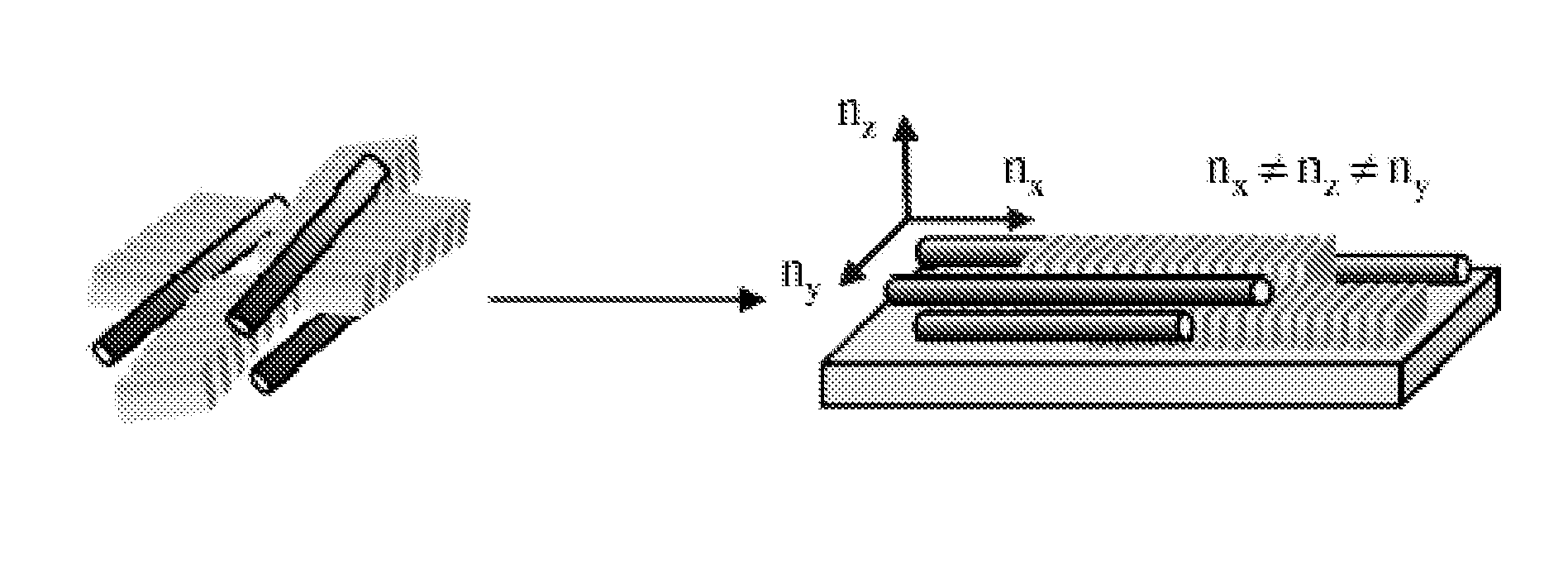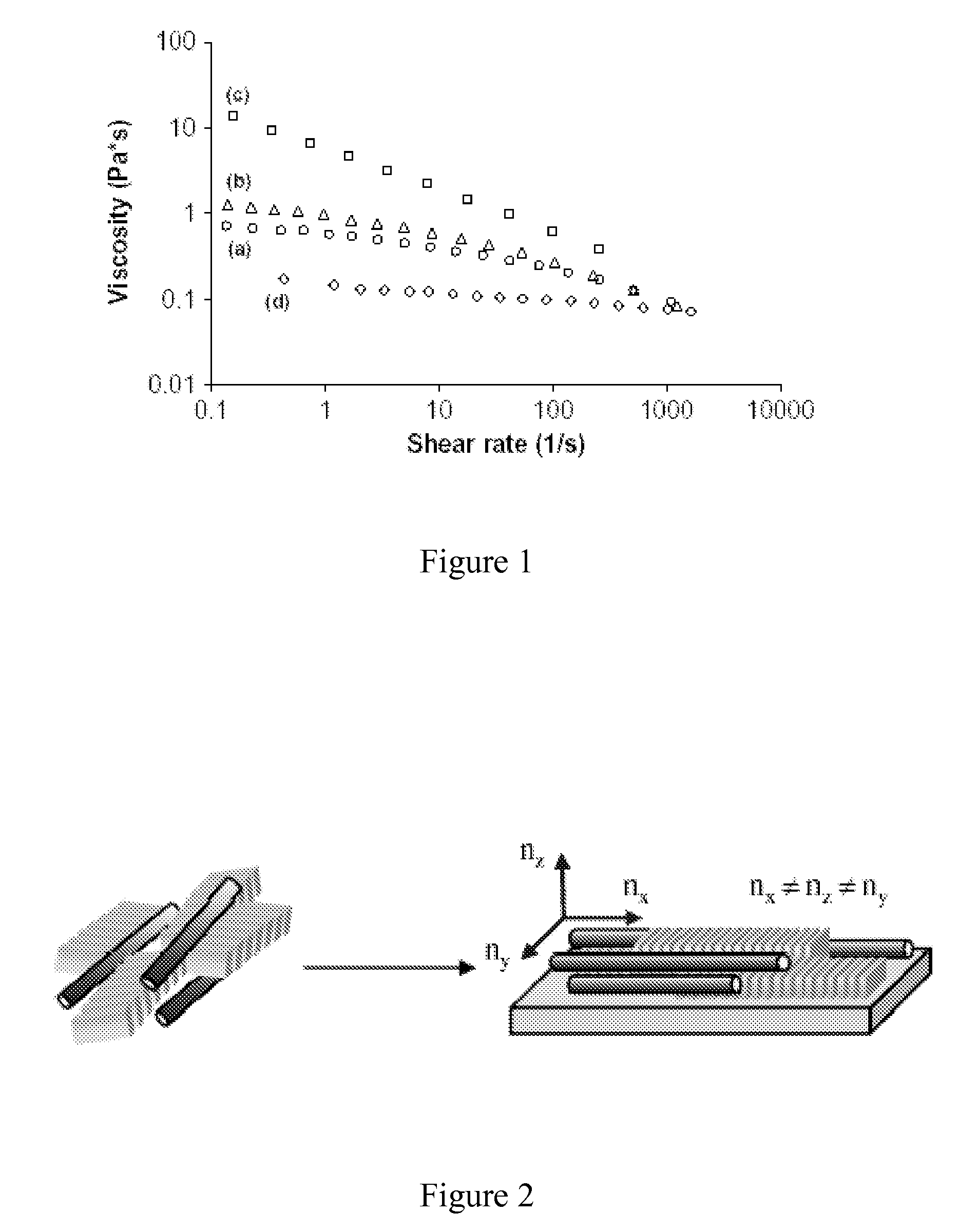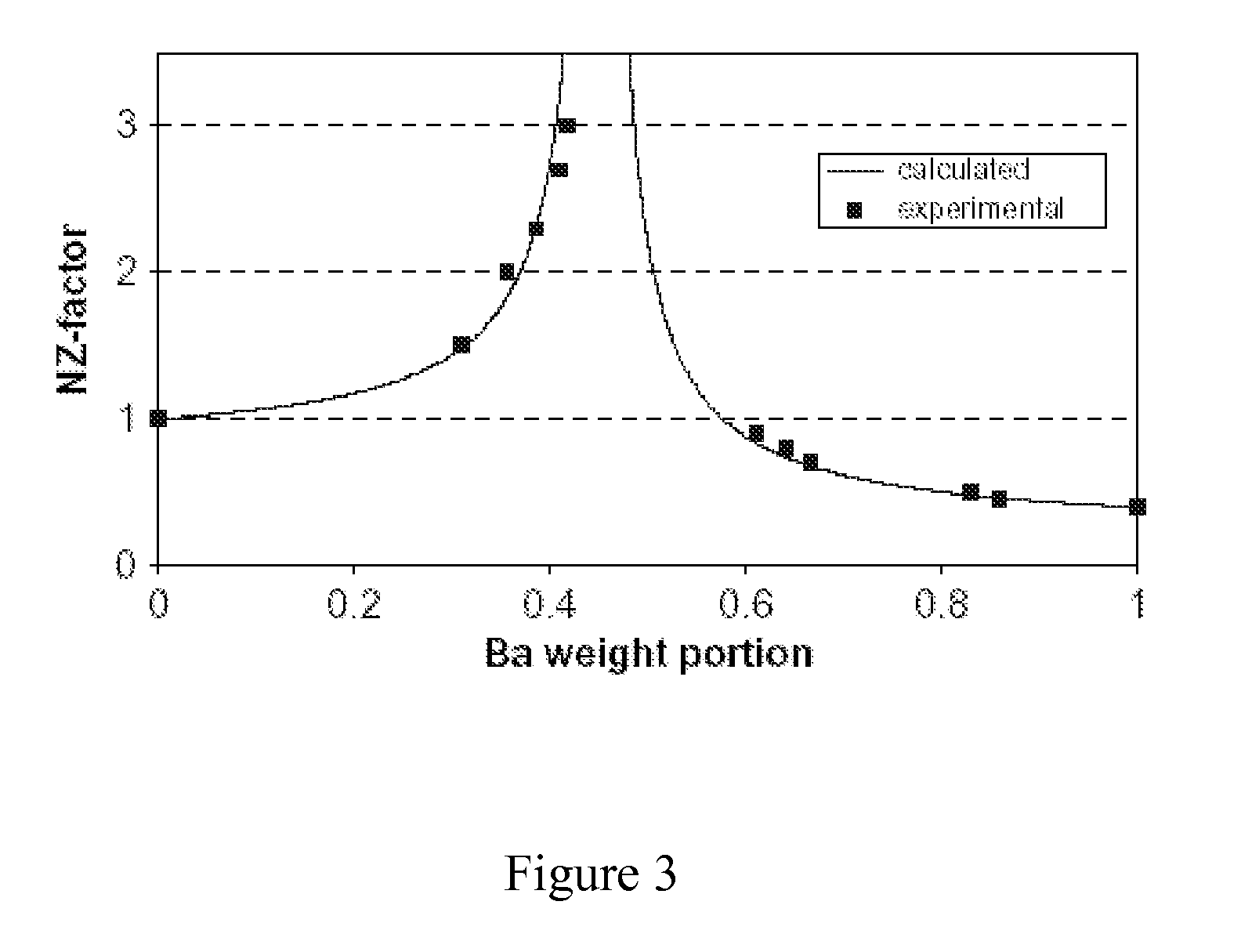Negative dispersion retardation plate and achromatic circular polarizer
a technology of negative dispersion retardation and retardation plate, which is applied in the field of organic chemistry, can solve the problems of limited opportunity of material control of optical anisotropy, adhesion problems, and inability to create thin solid films with controlled optical anisotropy
- Summary
- Abstract
- Description
- Claims
- Application Information
AI Technical Summary
Problems solved by technology
Method used
Image
Examples
example 1
[0079]This Example describes synthesis of poly(2,2′-disulfo-4,4′-benzidine terephthalamide) cesium salt (structure 1 in Table 1).
[0080]1.377 g (0.004 mol) of 4,4′-diaminobiphenyl-2,2′-disulfonic acid was mixed with 1.2 g (0.008 mol) of Cesium hydroxide and 40 ml of water, and stirred with dispersing stirrer till dissolution. 0.672 g (0.008 mol) of sodium bicarbonate was added to the solution and stirred. While stirring the obtained solution at high speed (2500 rpm) the solution of 0.812 g (0.004 mol) of terephthaloyl dichloride in dried toluene (15 mL) was gradually added within 5 minutes. The stirring was continued for 5 more minutes, and viscous white emulsion was formed. Then the emulsion was diluted with 40 ml of water, and the stirring speed was reduced to 100 rpm. After the reaction mass has been homogenized the polymer was precipitated via adding 250 ml of acetone. Fibrous sediment was filtered and dried.
[0081]Gel permeation chromatography (GPC) analysis of the sample was per...
example 2
[0082]This Example describes synthesis of poly(2,2′-disulfo-4,4′-benzidine sulfoterephthalamide) (structure 2 in Table 1).
[0083]10 g (40 mmol) of 2-sulfoterephtalic acid, 27.5 g (88.7 mmol) of triphenylphosphine, 20 g of Lithium chloride and 50 ml of pyridine were dissolved in 200 ml of N-methylpyrrolidone in a 500 ml three-necked flask. The mixture was stirred at 40° C. for 15 min and then 13.77 g (40 mmol) of 4,4′-diaminobiphenyl-2,2′-disulfonic acid were added. The reaction mixture was stirred at 115° C. for 3 hours. 1 L of methanol was added to the viscous solution, formed yellow precipitate was filtrated and washed sequentially with methanol (500 ml) and diethyl ether (500 ml). Yellowish solid was dried in vacuo at 80° C. overnight. Molecular weight analysis of the sample via GPC was performed as described in Example 1.
example 3
[0084]This Example describes synthesis of poly(para-phenylene sulfoterephthalamide) (structure 3 in Table 1).
[0085]10 g (40 mmol) of 2-sulfoterephtalic acid, 27.5 g (88.7 mmol) of triphenylphosphine, 20 g of Lithium chloride and 50 ml of pyridine were dissolved in 200 ml of N-methylpyrrolidone in a 500 ml three-necked flask. The mixture was stirred at 40° C. for 15 min and then 4.35 g (40 mmol) of 1,4-phenylenediamine were added. The reaction mixture was stirred at 115° C. for 3 hours. 1 L of methanol was added to the viscous solution, formed yellow precipitate was filtrated and washed sequentially with methanol (500 ml) and diethyl ether (500 ml). Yellowish solid was dried in vacuo at 80° C. overnight. Molecular weight analysis of the sample via GPC was performed as described in Example 1.
PUM
| Property | Measurement | Unit |
|---|---|---|
| thickness | aaaaa | aaaaa |
| temperature | aaaaa | aaaaa |
| total volume | aaaaa | aaaaa |
Abstract
Description
Claims
Application Information
 Login to View More
Login to View More - R&D
- Intellectual Property
- Life Sciences
- Materials
- Tech Scout
- Unparalleled Data Quality
- Higher Quality Content
- 60% Fewer Hallucinations
Browse by: Latest US Patents, China's latest patents, Technical Efficacy Thesaurus, Application Domain, Technology Topic, Popular Technical Reports.
© 2025 PatSnap. All rights reserved.Legal|Privacy policy|Modern Slavery Act Transparency Statement|Sitemap|About US| Contact US: help@patsnap.com



